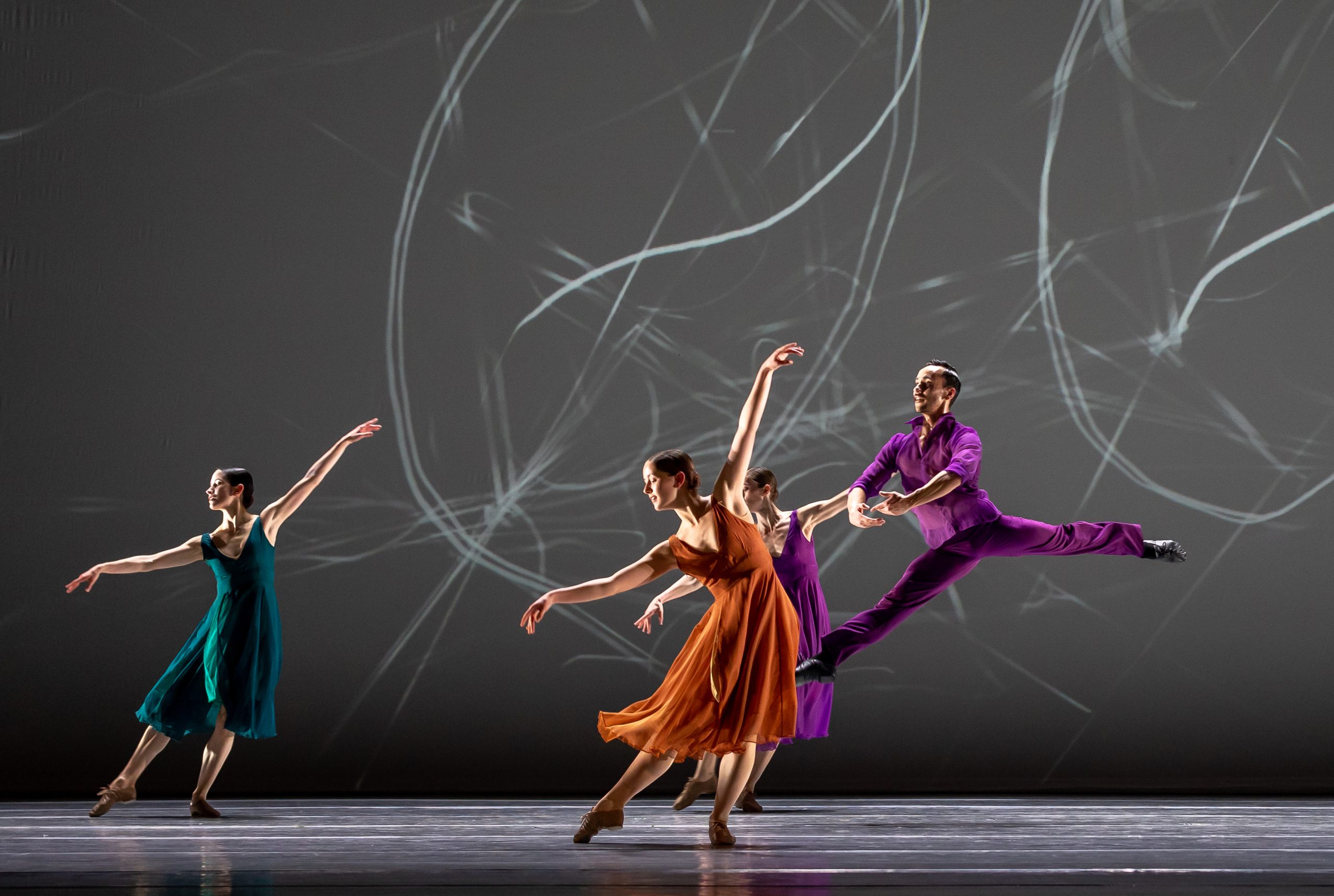review Theaterkrant ICON
All brakes off in an unabashedly triumphant finale.
April 14, 2025
by: Fritz de Jong
Lucinda Childs is one of the pioneers of minimal dance. The American dance innovator turns 85 this year. Introdans is celebrating this with the performance Icoon, featuring a world premiere by the ever-creative and tireless choreographer.
With Interior Drama, Lucinda Childs delivered a crystal-clear example of minimal dance in 1977. The piece, created for five dancers, was originally intended to be performed on rooftops. That setting undoubtedly adds an extra dimension, but it’s just as compelling on a completely bare theatre stage.
That same tension is absent in the new creation Notes of Longing.
Childs structured a sequence of duets, trios, and quartets set to eight piano pieces by Dutch pianist and composer Matteo Myderwyk. “Music for romantic evenings and personal moments of reflection” — that’s how I once read his compositions aptly described elsewhere.
The choreography fits that mood. The dancers are dressed by Childs’ regular designer, Dominique Drillot, in semi-transparent costumes that, partly due to the pleated trousers resembling temple columns, evoke associations with Ancient Greece. Against a backdrop that gradually shifts in color from ochre to indigo, a narrow rectangular screen hangs, onto which cloudscapes are projected.
Childs responds to Myderwyk’s meditative, tinkling notes with light and clear movements. So light and clear, in fact, that it starts to wear on me — the balance quickly tips into kitsch. More engaging is the interlude film in which we see the still remarkably fit and focused choreographer rehearsing her new work with the dancers of Introdans.
Also bordering on kitsch, but still managing to stay on the right side of that line, is Petricor, which Childs created for Introdans in 2018. Pencil sketches are projected on the backdrop — geometric floor plans of the choreography. These schematic drawings contrast beautifully with the lush colors of the costumes: dresses and suits in shades of blue, green, purple, and brown. Particularly striking is the organic way in which four colorful dance couples are alternated with two duos dressed in grey and black tones.
At various venues, the performance is accompanied by the National Youth Orchestra. The young musicians make a strong impression in their performance of Ludovico Einaudi’s popular composition Petricor. Unfortunately, their interpretation of Henryk Górecki’s industrial and pounding Harpsichord Concerto (performed here as a piano concerto) is considerably rougher.
Still, it’s ultimately not the musicians’ fault that Childs’ ballet Concerto (1993) doesn’t quite convince. The choreography is simply too clean and calculated to match Górecki’s music, which charges ahead like a drunken steamroller.
Stronger is Kilar (2013), the very first piece Childs created for the Arnhem-based company. The title refers to Polish composer Wojciech Kilar, a compatriot and contemporary of Górecki. In his Piano Concerto, Kilar displays a strong sense of Hollywood-style pathos — and the dance embraces it without hesitation.
The design (again by Dominique Drillot) is striking. The dancers, often lit only as silhouettes, carry metal structures shaped like hoop skirts and cubes, which create stunning visual images. Eventually, these movement-restricting frames are hung aside. Once that happens, both the orchestra and the dancers go full out in an unabashedly triumphant finale.
